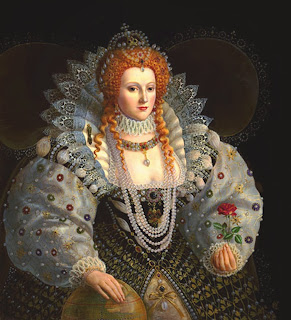Many Elizabethan hairstyles were very intricate with lots of details. These details included plaits, buns, braids with lots of jewels, gems and ribbons to enhance the beauty of the style.
I love this style because of the detailed fishtail plait, placing plaits at the side of the head is very common nowadays and creates quite a chic, soft look. So although like the Elizabethan style there is lots of detail, it is created in a much softer way. The volume at the front portrays more of an Elizabethan feel, whereas the colour of the hair represents the idea that today, we aren't afraid to experiment with lots of different colours to achieve our desired effect/look.
I really admire the use of twists for this style, the plait isn't as intricate as the plait in my previous image, however it replicates the curliness that the Elizabethan's used for many of their styles, as well as the twists that they used to place at the front of the head. The style creates a nice rounded shape at the front of the head, so although a very contemporary style, it still holds Elizabethan ideals. Small bits of ribbon have been used to secure the hair in place, which was also very common during the Elizabethan Era, to add some extra detail.
This low bun, a very modern style is made fairly Elizabethan through the use of the grid like pattern and pearls over the bun. I find this style really interesting, as it has lots of sleek, contemporary elements, but the decoration adds an Elizabethan touch. The pattern reminds me of ribbon, a prop that the Elizabethans loved to use.



















